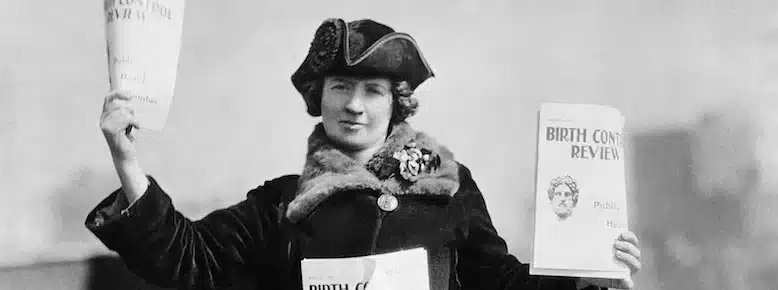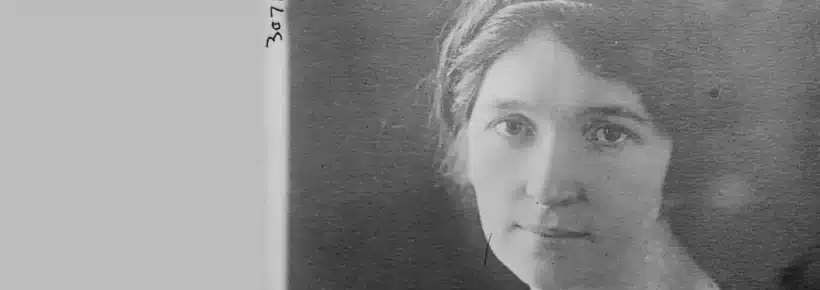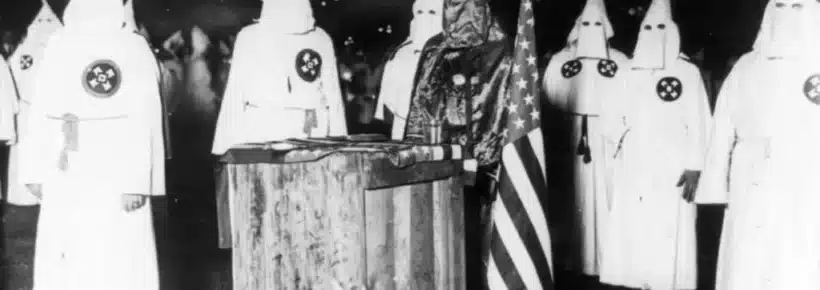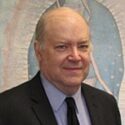Sanger’s Early Life
Margaret Sanger is a prime example of how people are molded from a young age by the direct and enduring influence of their parents. While genetics certainly play a part, people are formed by those around them all through their lives — but most especially when they are young.
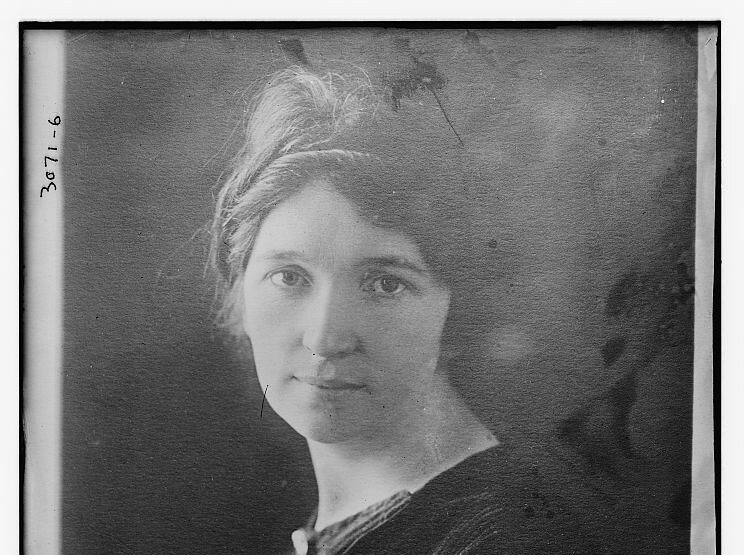
Margaret Sanger
Margaret Louise Higgins was born September 14, 1879 in Corning, New York, to Michael Hennessey Higgins and Anne Purcell Higgins. Michael and Anne were Catholics from Ireland but did not practice their Faith. In fact, Michael became an atheist not long after arriving in the United States.
Margaret was the sixth of eleven children. Her mother Anne died early at the age of 49. When she turned 21, Margaret became a nurse in training at the White Plains Hospital and, in 1902, she married architect William Sanger, giving up her education to do so. Although she suffered from tuberculosis, she was able to give birth to two sons and a daughter.
In 1911 the Sangers moved to New York City and became committed Socialists. Margaret also became involved with the Industrial Workers of the World (the “Wobblies”), a Socialist group which worked towards destroying capitalism.
Pro-Contraception Activism
Margaret began her writing career, and therefore her activism, by publishing two series on sex education beginning in 1911. These were entitled “What Every Mother Should Know” and “What Every Girl Should Know,” and appeared in the Socialist magazine New York Call. They were so explicit that even many readers of the magazine who considered themselves on the cutting edge of “progressive” social activism were outraged. Of course, by today’s standards, they would be considered boring.
Margaret frequently told a story about visiting a woman in a cramped tenement. The woman then died in her presence due to complications caused by her second self-induced illegal abortion. This incident helped motivate her to begin her birth control activism. However, Ellen Chesler, who researched and wrote a fawning book on Sanger entitled Woman of Valor, could find no evidence that this incident actually occurred. It appears that the entire episode was fabricated.
This is a well-known propensity of all “progressive” movements. They concoct lurid and shocking stories to tug on the heartstrings of listeners because they can’t provide evidence to back up their always-apocalyptic claims. The culture of death always, without exception, appeals to emotions and feelings, not facts and logic.
This is seen in Sanger’s Birth Control Review, which always featured several graphic letters. These were allegedly written by sick and desperate women with a house bursting with children, all born within a year of each other. The authors of the letters usually claimed that they would die if they became pregnant again. Oddly, all of these letters were written in the same style, and almost always with impeccable English and grammar, rather odd for uneducated tenement women.1 Years later, in 1928, Sanger compiled 500 of these letters into a volume entitled Motherhood in Bondage.
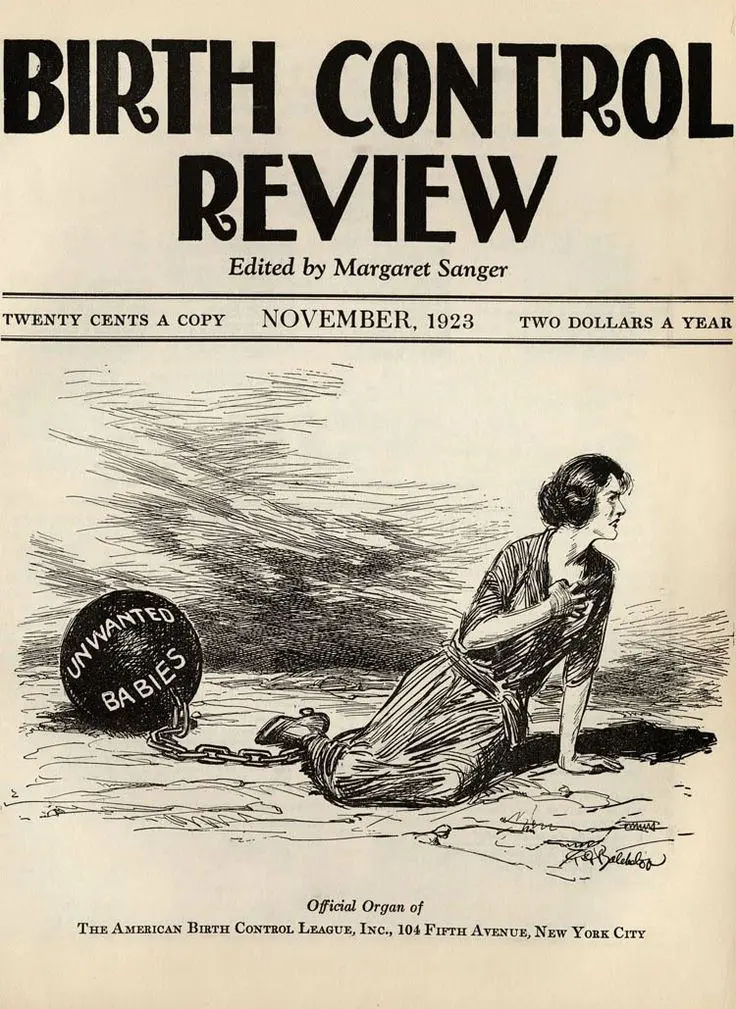
The Birth Control Review (November 1923)
Margaret left her husband William in 1913 and shortly thereafter married oil magnate James Noah Slee. In March 1914, she launched her monthly magazine The Woman Rebel. Its motto was “No Gods, No Masters” (an anarchist slogan which is still popular in Europe), and it went defunct after only seven months. It featured short articles with titles such as “In Defense of Assassination,” and it relentlessly attacked the Catholic Faith. Sanger correctly recognized the Church as the primary obstacle of the “progress” of the culture of death, just as the “progressives” of our age do.
One amateurish poem summed up the magazine’s philosophy:
And to-day I have broken the image of Christ
There is joy in my life, I am free.
~“The Savior,” August 1914
Legal Troubles
In August of 1914, Sanger was indicted for violating postal anti-obscenity laws after sending copies of The Women Rebel through the mail, and she fled to England.
There she met a number of British neo-Malthusians, including Charles Vickery Drysdale, and became convinced that overpopulation was a threat to the planet (even though world population at the time was 1.8 billion, less than one-quarter of the current number).
During her exile in England, Sanger adopted the “free love” philosophy of Havelock Ellis and met Marie Stopes, founder of the Society for Constructive Birth Control and Racial Progress. Stopes’ teachings would inform the organization named after her, Marie Stopes International, or MSI. MSI is the most extreme population suppression organization in the world, performing illegal abortions in many nations, ignoring even the pretense of informed consent, and generally corrupting the morals and beliefs of Africans in particular in its mad rush to hold their populations in check.
In 1914, Sanger was also prosecuted under the anti-obscenity Comstock Act for her short book Family Limitation, which described in detail the various methods of contraception available at the time.
On October 16, 1916, she opened the first birth control clinic in the United States in Brooklyn’s Brownsville neighborhood and was arrested as a result. She was found guilty of several charges and was sentenced to 30 days in a workhouse. However, the New York Court of Appeals also found a new right in the Constitution that doctors had the right to prescribe contraception. This was the first ruling that began more than a century of judicial activism, where judges write the law instead of interpreting it. This activism would eventually lead to the legalization of abortion, euthanasia, and ersatz homosexual “marriage,” among many other evils.
Planned Parenthood
In 1921, Sanger founded the American Birth Control League, which later evolved into the Planned Parenthood Federation of America.
A 1936 court decision exempted contraception from the specifications of the Comstock Act, and the following year the American Medical Association cleared the way by accepting birth control as a normal component of medical school training.
At this point, Sanger rightly considered her birth control movement to be victorious, and she expressed a desire to enter a state of semi-retirement. But her vast experience and notoriety did not allow her much rest. She moved on to help shape and guide the international birth control movement. In 1942, the Board of Directors of the Birth Control Federation of America voted to change the organization’s name to the Planned Parenthood Federation of America (Sanger opposed this name as being too euphemistic).
In 1948, Sanger was an advisor on the project that founded the International Committee on Planned Parenthood, which evolved into the International Planned Parenthood Federation (IPPF) in 1952. Sanger served as its first president until 1959, when she was 80 years old.
Meanwhile, Sanger had raised funding for Gregory Pincus to develop and test his Enovid birth control pill, the first on the market.
Anti-Abortion and Eugenic Views
One of Sanger’s primary motivations for promoting birth control was to prevent the numerous illegal abortions that took place in her day. For most of her life, she was vocally anti-abortion, seeing it as the ending of a life and a “shameful crime.” She naively believed, as many do today, that the universal availability of contraception would end the practice of abortion. Interestingly, her second husband, Noah Slee, would directly assist Margaret’s efforts by smuggling boxes of diaphragms into the United States in boxes labeled “3-in-1 Oil.” Being a shrewd businessman, Slee knew a promising moneymaking scheme when he saw it, eventually founding a company that would be the first to manufacture diaphragms after contraception became legal.
In 1917, Sanger began publishing her famous journal The Birth Control Review, which would run until 1940 and would be a haven for racists, eugenicists and even Nazi writers. Interestingly, one of the closest advisors to Margaret Sanger was leading racist Harvard Professor Lothrop Stoddard, who sat on the National Council of the American Birth Control League (ABCL) from January 1926 to March 1929. He had written The Rising Tide of Color against White World-Supremacy and The Revolt against Civilization: The Menace of the Under-Man in 1922 (both favorites of current-day racist groups). This was years before his tenure at the ABCL, so his xenophobic views were well-known. In fact, he was praised as a leading “racial hygienist” and “American pathfinder” by leading Nazi scientists.
Sanger continued to write, and her output grew exponentially. Her books Woman and the New Race and The Pivot of Civilization were best-sellers with more than half a million sold. She also told her story of her activism in two other books, My Fight for Birth Control and Margaret Sanger: An Autobiography.
Sanger died of congestive heart failure in 1966 at the age of 86. She lived long enough to celebrate another major case of judicial activism in the Supreme Court’s 1965 decision Griswold v. Connecticut, which legalized contraception in the United States.
Video Summary
+ Endnote
[1] We also see numerous fake hate crimes staged by homophile activists and race baiters, unverifiable tales of thousands of women dying of illegal abortions, and fabricated stories of people dying slowly in screaming agony cooked up by the euthanasia pushers.
Related Content
Dr. Brian Clowes has been HLI’s director of research since 1995 and is one of the most accomplished and respected intellectuals in the international pro-life movement. Best known as author of the most exhaustive pro-life informational resource volume The Facts of Life, and for his Pro-Life Basic Training Course, Brian is the author of nine books and over 500 scholarly and popular articles, and has traveled to 70 countries on six continents as a pro-life speaker, educator and trainer.



